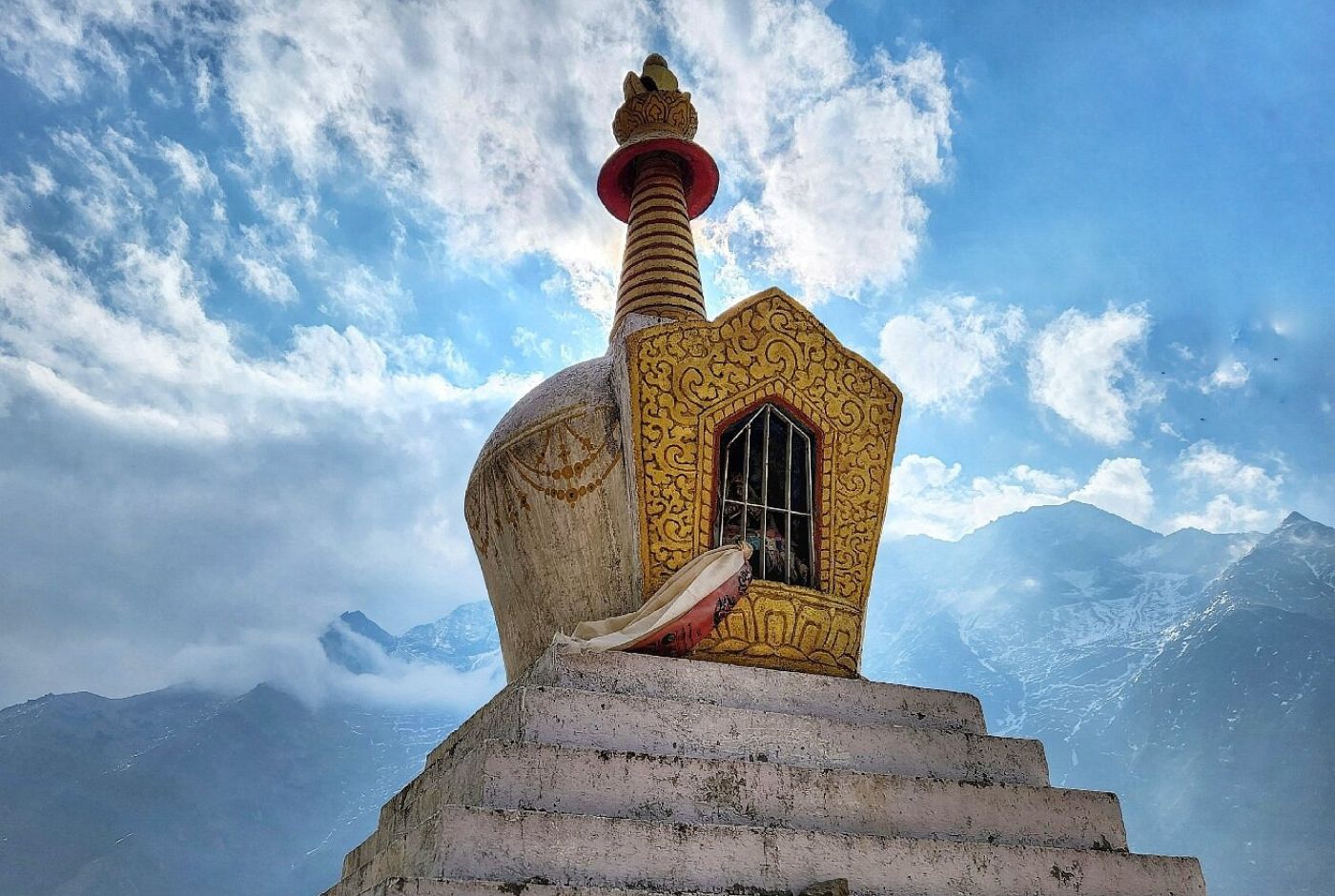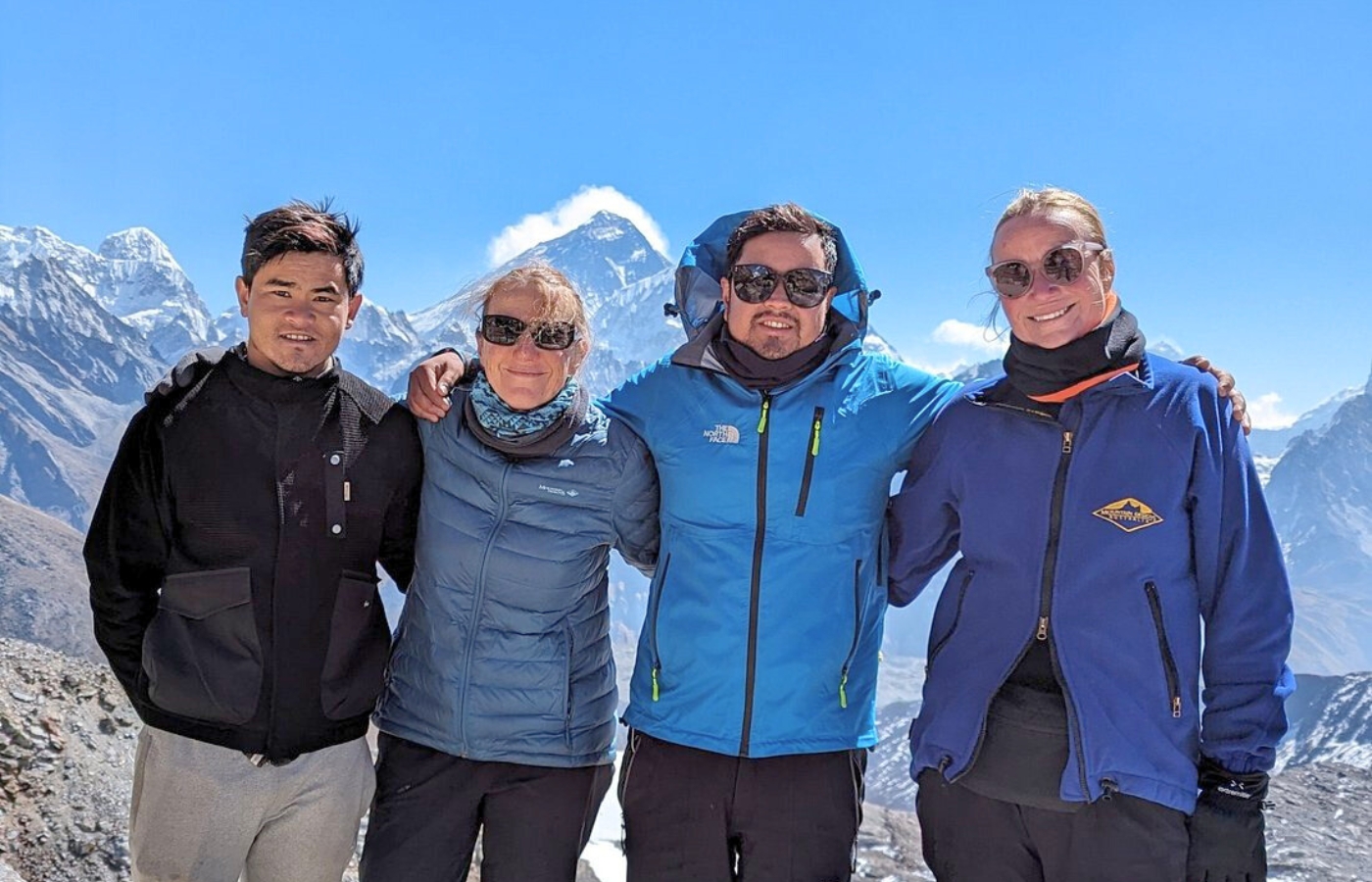Nepal’s mountains are a paradise for hikers. Its majestic terrains bring trekkers close to some of the highest mountains globally and allow them to taste the diverse cultures of Nepal. Moreover, with hundreds of exciting and beautiful mountain hiking trails, Nepal is indeed the hiking heaven. Besides, home to eight of the world’s highest peaks, there is no doubt that Nepal’s trekking trails are beautiful. In addition, with various trails, there are all types of trails suitable for all trekkers. Be it rookie trekkers or experienced trekkers, and there are trekking routes for every ability level. All treks are filled with wonders and offer remarkable experiences; thus, no outings can go wrong in Nepal. However, trails might not be the reason for having a grim trekking experience, but less preparation can be. Thus, before you pack their backpacks and put on hiking shoes, and hit the trail, have a look at these tips we have compiled for you. These tips answer all your questions regarding how to prepare for trekking in Nepal.
Find the trek suitable for you
Most rookie trekkers are not well aware of trekking grades. And this often led to novice trekkers choosing a trekking journey beyond their ability. This is sometimes common amongst experienced trekkers also. However, they know how to tackle demanding situations. Hence, finding a suitable trek is the first step in our guidebook of “How to prepare for a trek in Nepal.” Knowing suitable walks helps trekkers understand their abilities and progress accordingly.
Choose a suitable time for you

After you have found a suitable trail for yourself, choose an appropriate time for the trek. Well, trekking in Nepal is available all year round. Nonetheless, knowing the best time is crucial to enjoying the hiking route thoroughly. Thus, choosing a suitable trekking time is another essential step trekkers need to follow for a beautiful trekking experience.
Get your body prepared for the trek

This is one of the crucial aspects of preparing for the trek. Because if the person is physically fit and in good health, it would be a lot easier on the hike. Besides, most of the trekking routes of Nepal take place at high altitudes. Thus, to adjust to the larger sizes, one needs to have prepared their body in advance. Trekkers can achieve this by exercising and training. As a part of training and preparation, one can qualify for a trek by focusing on strength-building exercises, flexibility, and cardiovascular activity. These training sessions help your body physically prepare for hiking.
Similarly, trekkers can increase their strength by walking or climbing up and downstairs. These activities help in strength building in their legs and stimulate them while walking uphill. Likewise, trekkers can do activities like running and cycling to increase stamina for hiking. Trekkers have to carry a daypack even when they use porters or mules to carry their large luggage. Your body attempts to adapt over a vast distance to weight and discomfort. Thus, get your body ready with around a 5 kg rucksack by ascending and going downstairs. More than carrying loads, it is the rugged terrain that is more testing. Hence, prepare your body with solid preparation with exercises and training. And every day, push the bar with a bit extreme exercise routine.
Physical Preparation
Physical preparation for Nepal trekking involves a combination of cardiovascular exercise, strength training, and acclimatization, all crucial for a successful and enjoyable trip. It's recommended to start preparing 45-90 days before the trek, focusing on activities that build stamina, leg strength, and endurance.
Cardiovascular Training:
- Aerobic exercise: Regular cardiovascular activities like jogging, swimming, cycling, and brisk walking are essential to improve heart and lung function.
- Interval training: Incorporate interval training (mixing intense activity with rest) to mimic the varying terrain of a trek and improve oxygen efficiency at altitude.
- Stair climbing: Mimic uphill sections of the trek by regularly climbing stairs, building leg strength and stamina.
- Hiking: Regularly hike on varied terrain, including hills, to enhance endurance and prepare for the challenges of the trek.
Strength Training:
- Leg strength: Focus on exercises like squats, lunges, and step-ups to build strength in the legs, crucial for navigating uphill and downhill sections.
- Core strength: Incorporate core exercises like planks and back extensions to improve stability and support joints during trekking.
- Upper body strength: Work on exercises like push-ups and rows to build strength for carrying a backpack.
- Strength training frequency: Aim for 2-3 strength training sessions per week.
Acclimatization:
- Altitude training: If possible, train at higher altitudes to allow your body to acclimate to lower oxygen levels, preparing you for trekking at altitude.
- Acclimatization hikes: Include shorter, gradual altitude gain hikes in your training to prepare your body for the altitude on the trek.
- Pacing yourself: Learn to pace yourself and listen to your body, especially at higher altitudes, to avoid altitude sickness.
Flexibility and Balance:
- Stretching: Incorporate stretching exercises into your routine to improve flexibility and prevent injuries, especially in the legs, hips, and back.
- Yoga and Pilates: These activities can improve flexibility, balance, and core strength.
Mental Preparation:
Mental preparation is crucial for a successful and enjoyable trek in Nepal. This involves setting realistic expectations, practicing mindfulness, visualizing success, staying positive, and preparing for the challenges of high altitude and changing conditions. It's about building mental resilience and maintaining a positive mindset throughout the trek.
Elaboration:
- Set Realistic Expectations: Understand the demands of the trek and the potential challenges. Don't overestimate your fitness level or underestimate the altitude and terrain.
- Practice Mindfulness and Meditation: These practices can help you stay focused, manage stress, and improve your ability to cope with difficult situations.
- Visualize Success: Imagine yourself successfully navigating the trail, reaching your destination, and overcoming obstacles. This can boost confidence and prepare you mentally.
- Maintain a Positive Mindset: Focus on the positive aspects of the trek, such as the stunning scenery, the sense of accomplishment, and the opportunity to connect with nature.
- Prepare for Altitude: Be aware of the risks of altitude sickness and take necessary precautions, such as acclimatizing slowly and staying hydrated.
- Be Prepared for Changing Conditions: Trekking in Nepal can involve unpredictable weather, challenging terrain, and varying living conditions. Be prepared for these changes and have a plan for how to adapt.
- Develop Mental Resilience: Recognize that trekking is a physical and mental challenge. Build your mental strength by gradually exposing yourself to stressors and practicing techniques for managing fatigue and setbacks.
- Remember Your Why: Reflect on the reasons you are embarking on this trek and stay motivated by remembering your goals and the rewards of this journey.
- Utilize Positive Self-Talk: Use positive affirmations to boost your confidence and remind yourself of your strengths and capabilities.
- Pace Yourself: Don't try to do too much too quickly. Take breaks, listen to your body, and prioritize rest and recovery.
Approach the trek gently
The key to a successful journey and to appreciate mountains is by approaching the trek slowly and steadily. Everybody can suffer from altitude sickness, even the fit hikers. The only way to have a beautiful trekking journey is by taking time while walking on the trek. Don’t rush or walk over your limit or become an overachiever. It will do no good to you. Rushing on the trails and walking beyond the itinerary suggested is the best way to suffer from altitude sickness. Along with gently walking, hydrating is another critical aspect for trekkers to live by. Keep drinking water on an hourly basis, trek gently, and take short breaks in between.
Altitude Acclimatization for trekking in Nepal
Altitude acclimatization is crucial for safe trekking in Nepal. A gradual ascent, staying hydrated, and avoiding alcohol and smoking are key to preventing altitude sickness. Rest days and consideration of medication like Diamox can also aid acclimatization, as well as listening to your body and descending if necessary.
Key Strategies for Altitude Acclimatization:
- Gradual Ascent: Avoid rapid increases in altitude. Aim to ascend at a rate of no more than 300-500 meters per day.
- Climb High, Sleep Low: Ascend to higher altitudes during the day but descend to a lower altitude to sleep.
- Hydration: Drink plenty of fluids, especially water, throughout the day.
- Nutrition: Eat a balanced diet, including carbohydrates and proteins, to fuel your body.
- Rest Days: Incorporate rest days into your itinerary to allow your body time to adapt to the altitude.
- Avoid Alcohol and Smoking: These can hinder your body's ability to acclimatize.
- Medication: Consult with your doctor about taking medications like Diamox to help with acclimatization.
- Listen to Your Body: If you experience symptoms of altitude sickness, rest and consider descending to a lower altitude.
- Oxygen: In severe cases, oxygen supplements or emergency evacuation may be needed.
Important Considerations:
- Altitude sickness: It's crucial to recognize the symptoms of altitude sickness (headache, nausea, dizziness, shortness of breath) and take appropriate action.
- Individual variation: Everyone acclimatizes at a different rate, so be mindful of your body's signals and adjust your pace accordingly.
- Emergency planning: Have a plan for managing altitude sickness, including emergency evacuation if necessary.
Choose a reliable trekking agency
You must choose a reliable trekking agency for your journey because they add tremendous value to your experience. Going with a trekking agency adds extra cost, but these trek operators make your trip worth every cent you spend. These experts not only work to organize your accommodation and transportation requirements, but they work to enhance your trekking experience in their home country. Henceforth, in a place with an extra budget, an excellent experience always wins over.
Nevertheless, questions arise when people find it challenging to choose a good tour operator. Well, it is pretty tricky, too, when there are plenty of trekking agencies. Thus, while appointing a reliable trekking agency, seek anyone who knows the area well and has trekking experience. This is important as the mountain weather is unpredictable, and there’s a need for a guide who understands the mountains, can recognize when the climate is changing, and lead you to a safe place.
Also, ask whether the trekking staff have first aid training and the appropriate medical facilities. Likewise, check reviews and testimonials. Similarly, check if they hire locals because they are familiar with hiking trails; it also helps improve the local economy. Additionally, the company is associated with an established and recognized association such as the Nepal Tourism Board, Trekking Agencies Association of Nepal (TAAN), and Nepal Mountaineering Association (NMA).
Packing and Equipment Checklist
Trekking equipment is another aspect you must plan for hiking. An adequate and appropriate equipment checklist for hiking is a must for any expedition. The hiking trip will be harder without the correct equipment. Thus, you must be packing right, and you have all the necessary equipment. Besides, while packing, it is essential to remember everything must fit into one backpack. As far as equipment is concerned, trekkers with each trekking journey learn what they don’t need. Therefore, it is common for trekkers to pack beyond necessary items in their initial trekking journey.
A packing and equipment checklist of everything you need for a trek in Nepal:
Trekking Shoes
Any high-altitude climb demands solid trekking shoes with a firm grip and supporting the ankle. Also, it should be suitable for walking in snow as well. It will be even better if it is waterproof. Likewise, invest in a good trekking shoe. Because, once you start hiking, you will fall in love with this hobby. Besides, there are options of renting hiking boots, but there is a chance of it not being comfortable to your legs. Therefore, buy good hiking boots and go for one or hike before starting on the trek to make shoes more accommodating to your legs.
Backpack
It is essential to be conscious that carrying a light pack is simpler and more accessible than having a big bag when you prepare for trekking excursions. Naturally, hefty baggage is not plausible on the hilly terrain. For that purpose, it is necessary to prepare a light duffle bag, which contains only the needed items and the equipment. For example, the load may include your clothing, appliances, and other goods. With only the required facilities, it makes your hiking trip more convenient to keep your luggage as light as possible.
Clothing for trekking in Nepal
Clothing is an essential aspect of trekking in the Nepal Himalayas. However, people have expressed their horrible experiences due to improper clothing decisions. And we wouldn’t want that for you. Hence to prevent having clothing mishaps, here are a few clothing tips for trekking in Nepal:
Clothing fabrics: In the market, you can find trekking clothes in different fabrics. But it is imperative which fabric is suitable for the trek. Basic clothing fabrics are wool, polyester/nylon clothing, fleece, silk, and cotton. However, the best amongst these fabrics for trekking in Nepal is polyester/nylon clothing. Otherwise, any other wool is basically not made for trekking. Polyester is affordable, and they excel at wicking sweat and drying fast. For inner layers, polyester is suitable for any treks and any season. And to layer it up, a thick down jacket will work best.
Insulating: Weather in the Himalayas is unpredictable. Hence it is best to be prepared with clothing that is perfect for all weather. Henceforth, the mid-layer clothing must keep you warm. Clothing does not create heat; rather, it will keep the heat your body produces if it is effective at shielding.
Note: Pack your clothing as per the number of days you will be on the trek.
Waterproof and Windproof: The outer layer is usually windproof and waterproof. It protects hikers from getting wet and chills you when the wind takes away your body’s heat. However, water and wind-resistant jackets do not entirely prevent rain and wind. Thus they only provide modest weather protection. Waterproof jackets may not additionally say that they are windproof, although they are.
Don’t buy Travel Insurance last minute.
Another important key point while preparing for a trek is to purchase excellent travel insurance. Travelers are well aware of how travel insurance is essential for any journey. However, due to hectic schedules, some forget this part and purchase insurance last minute. It is a significant part; thus, it requires the traveler’s best attention. A few things to remember before buying travel insurance is how attentive and how good are the services. What is the feedback about the agency and a few other things like, what are the benefits? Similarly, while buying your benefit plan, make sure it covers more than the maximum elevation of your trekking journey and emergency helicopter evacuation. These are essential aspects, and make sure your insurance plan has these features.
Other essentials
Carry sun hats, bandanas to wrap your face and neck, and dark sunglasses to protect you from sunlight or snow. Similarly, don’t forget to bring all your doctor-prescribed medication if you require them. Likewise, headlamps, sunblock creams are also essential, so don’t forget to put them in your backpack.
How to prepare for Nepal trekking for beginners?
To prepare for a beginner trek in Nepal, focus on physical fitness, research suitable routes, pack appropriately, and consider acclimatization and cultural awareness. Regular cardio, strength training, and hiking practice will build endurance and leg strength. Researching routes and choosing beginner-friendly options, like the Ghorepani Poon Hill Trek, is crucial. Essential gear includes trekking boots, a backpack, weather-appropriate clothing, and a first-aid kit. Acclimatize gradually, especially at higher altitudes, and be mindful of altitude sickness. Learning some Nepali phrases and understanding local culture will enhance your experience.
How to prepare for Nepal trekking in winter?
To prepare for winter trekking in Nepal, focus on selecting a suitable trek, seeking professional guidance, and packing essential gear. Layering your clothing, including thermal base layers, insulated mid-layers, and waterproof outerwear, is crucial. Ensure you have comfortable, waterproof trekking boots with good grip, and pack accessories like a warm hat, scarf, and sunglasses.
Final words
Check the essentials, do thorough research about the trek, and find an appropriate time for the hike. These tips "How to prepare for trekking" will help you in having an incredible journey. While there will be a few problems along the way, travelers will not find it very difficult to resolve. In general, remember these tips and get your way through the Himalayas of Nepal and begin on an unforgettable adventure.



